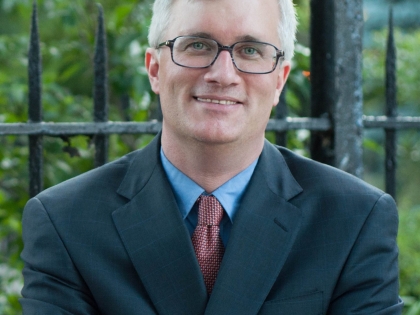
Confronting Gun Violence in the US
A headline about America’s ongoing gun crisis shows “1,624 mass shootings in 1,870 days”—a pattern unparalleled anywhere else in the world.
No other developed nation comes close to the rate of U.S. gun violence. Americans own about 265 million guns, more than one gun for every adult.
Data from the Gun Violence Archive reveals that there is a mass shooting—four or more people shot in one incident—nine out of every 10 days on average.
The absence of effective gun laws at the national level facilitates an ongoing mayhem perpetrated by persons with untreated anger, fanatic ideologies, unstable minds, or other mental health issues.
Read More
The Difficulty of Ending Gun Violence in the United States
The American gun crisis, and the attitudes and laws that make it possible, are relatively new. The broad idea of a right to own firearms did not exist a generation ago, nor did the legal basis for it.
“For 218 years,” Michael Waldman wrote in “The Second Amendment: A Biography,” “judges overwhelmingly concluded that the amendment authorized states to form militias, what we now call the National Guard,” and included no right for individuals to own firearms.
In 1991, Chief Justice Warren Burger, appointed by President Richard Nixon, called the notion of an individual right to bear arms “one of the greatest pieces of fraud … on the American public by special interest groups.”
The notion wasn’t mentioned anywhere in the Constitutional Convention, in the House of Representatives when it ratified the Second Amendment, in the state legislatures that debated it, or in the correspondence of those involved with its creation.
19-year-old Nikolas Jacob Cruz used his legally purchased high-powered rifle to kill 17 students and teachers at a Parkland, Florida high school on Valentine’s Day—the eighth school shooting in 2018, boosting the number of gun-related deaths this year to 2,578.
Whenever a massacre occurs, shocked citizens wonder why it happened and how it could have been prevented. The most obvious conclusion is that there must be greater gun control.
‘Red Flag’ Laws
Prior to Parkland, about 19 state legislatures were considering “red flag” bills that would let a court temporarily prohibit someone from possessing or buying firearms if they’re deemed to pose a threat to themselves or others.
Such laws—variously known as “extreme risk protection orders” (ERPOs), “gun violence restraining orders,” and “red-flag laws”—are already in effect in five states.
ERPOs are meant to fill in gaps and allow action to be taken before a crime is attempted, when evidence shows danger is imminent.
New York state Sen. Brian Kavanagh, chairman of the lawmakers’ gun violence coalition, says people “don’t have to wait for something terrible to happen” before addressing whether someone who’s been shown to be a threat should have guns.
The laws have drawn criticism from gun-rights proponents who are concerned about due process. “ERPOs (will) be ineffective, because a prohibited respondent can still obtain guns by stealing them,” said Dudley Brown, president of the National Association for Gun Rights, in an interview with CNN.
Since Parkland, bills have been introduced in five more states. At least 31 states are either considering bills or have lawmakers who have committed to introducing them, according to the American State Legislators for Gun Violence Prevention (ASLGVP), a nonpartisan coalition of lawmakers.
CNN legal analyst Page Pate said the judge’s initial, ex parte order, called for by ERPOs, is an infringement of due process, but a reasonable one. “(The) question is whether ERPOs … can survive Second Amendment challenges….(The issue) may be challenged in court as more states enact these laws.”
As pro-gun control Americans galvanize behind the Parkland teenagers organizing national protest marches on March 24, the National Rifle Association (NRA) decries it as a “socialist” movement trying to “eradicate all individual freedoms.” For forty years, the NRA has prevented Washington and many state governments from restricting the military-style assault rifles used in mass killings.
Robert Spitzer, author of “The Politics of Gun Control” stresses that effective gun regulation across the United States requires a new framework despite thousands of regulations at the state and municipal levels. Weapons restricted in Canada flow unimpeded from states with weak laws to ones with stronger regulations and across international borders. 54 percent of Canadian firearm-related homicides in 2016 were related to American-style gun culture.
Representatives in Congress must collectively seek solutions to keep killers away from guns. However, too many lawmakers get their funding from the NRA and decide to block commonsense changes. As long as deadly weapons remain easily obtainable, mass shootings will continue.
Last week, Florida Gov. Rick Scott (R) signed Senate Bill 7026 to toughen gun control. The NRA immediately filed a lawsuit against Florida.
It’s time to end the gun madness. America’s students may yet be the nemesis of the right-to-bear-arms zealots. And Australia could be a model for the United States—it hasn’t had a fatal mass shooting since changing its gun laws in 1996.
Former Canadian Secretary of State, Hon. David Kilgour speaking at the Human Organ Trafficking panel at UCSD on Nov. 2 (Diane Schneider)
David Kilgour, a lawyer by profession, served in Canada’s House of Commons for almost 27 years. In Jean Chrétien’s Cabinet, he was secretary of state (Latin America and Africa) and secretary of state (Asia-Pacific). He is the author of several books and co-author with David Matas of “Bloody Harvest: The Killing of Falun Gong for Their Organs.”
Views expressed in this article are the opinions of the author and do not necessarily reflect the views of The Epoch Times.